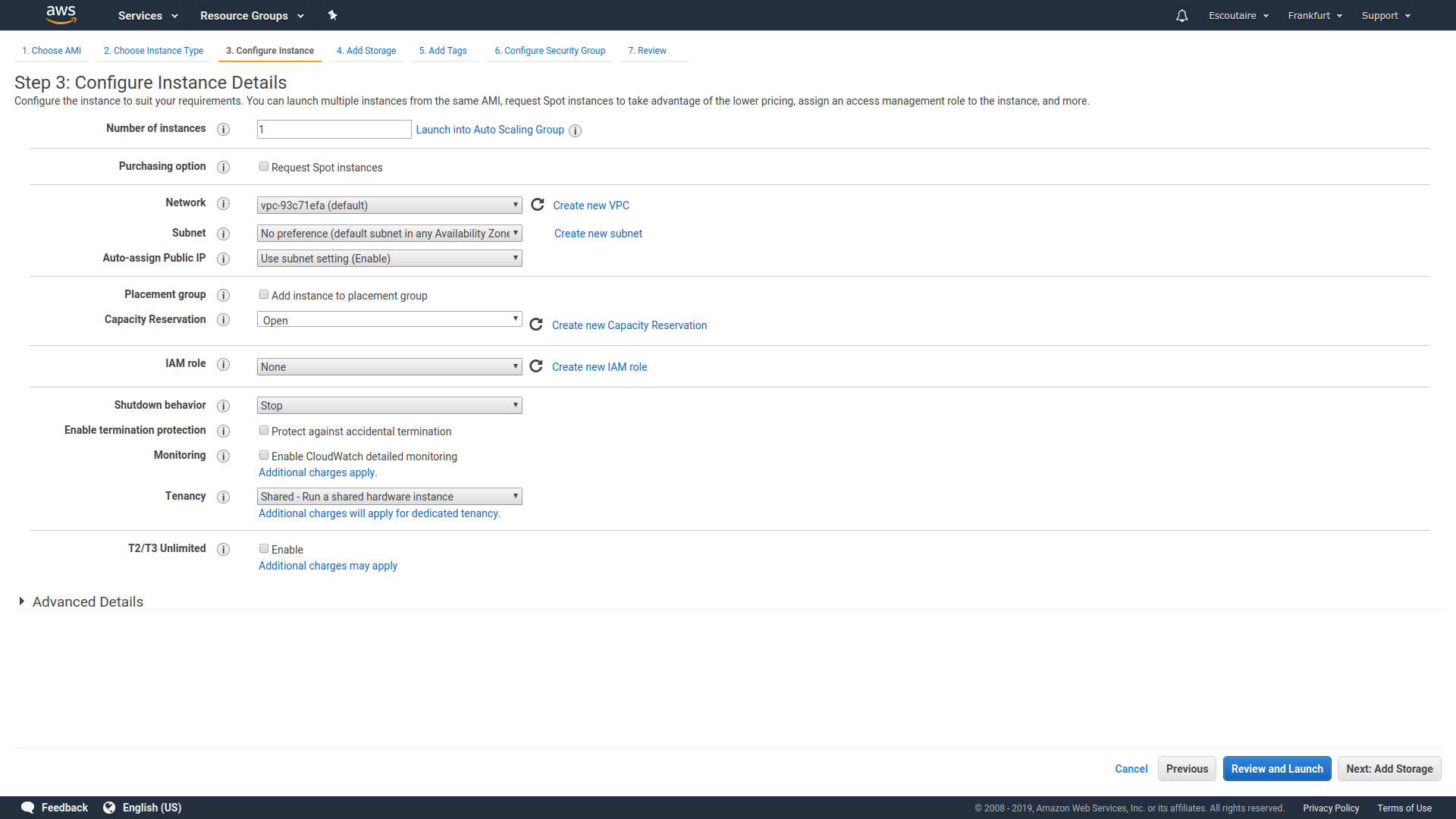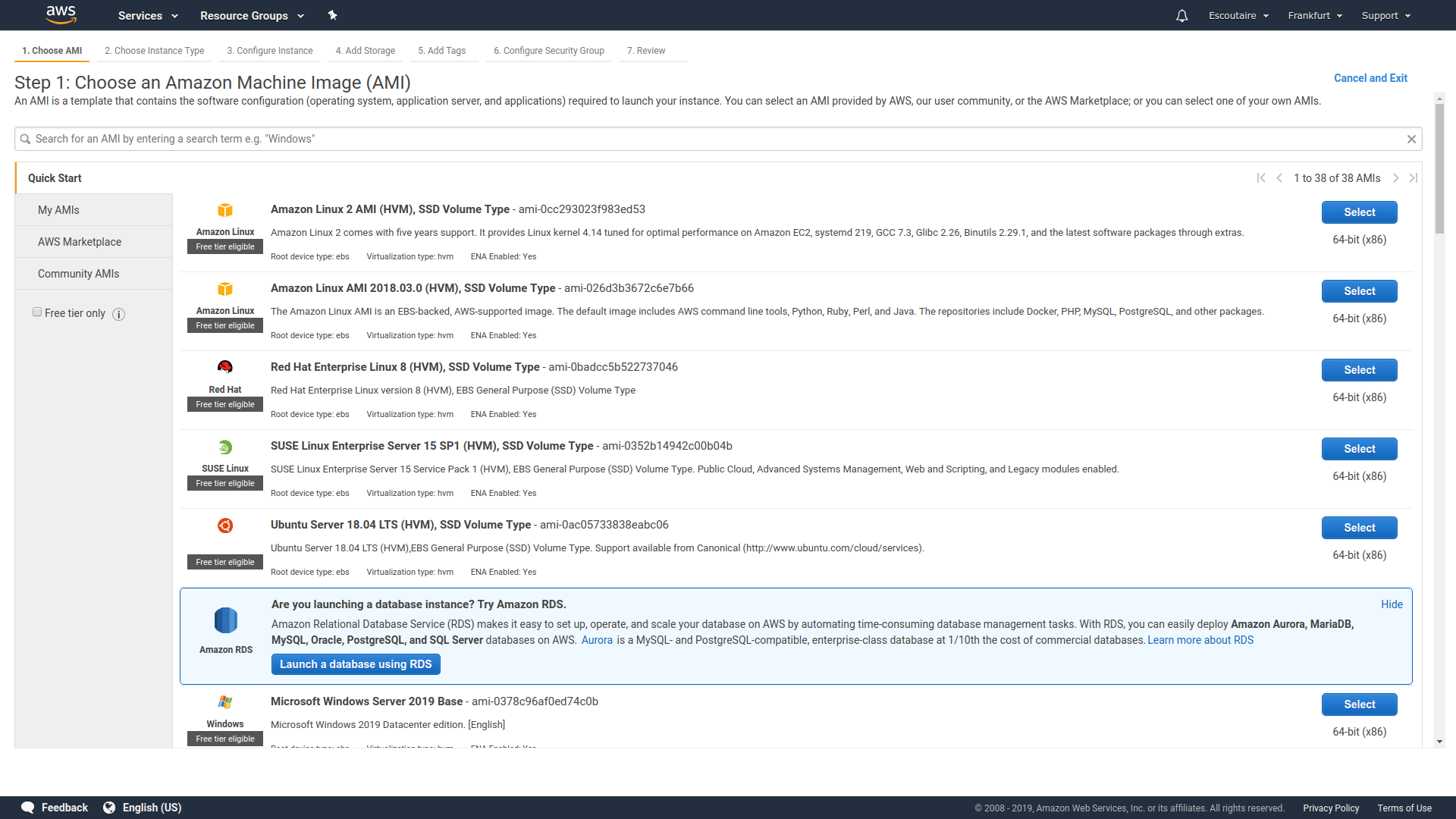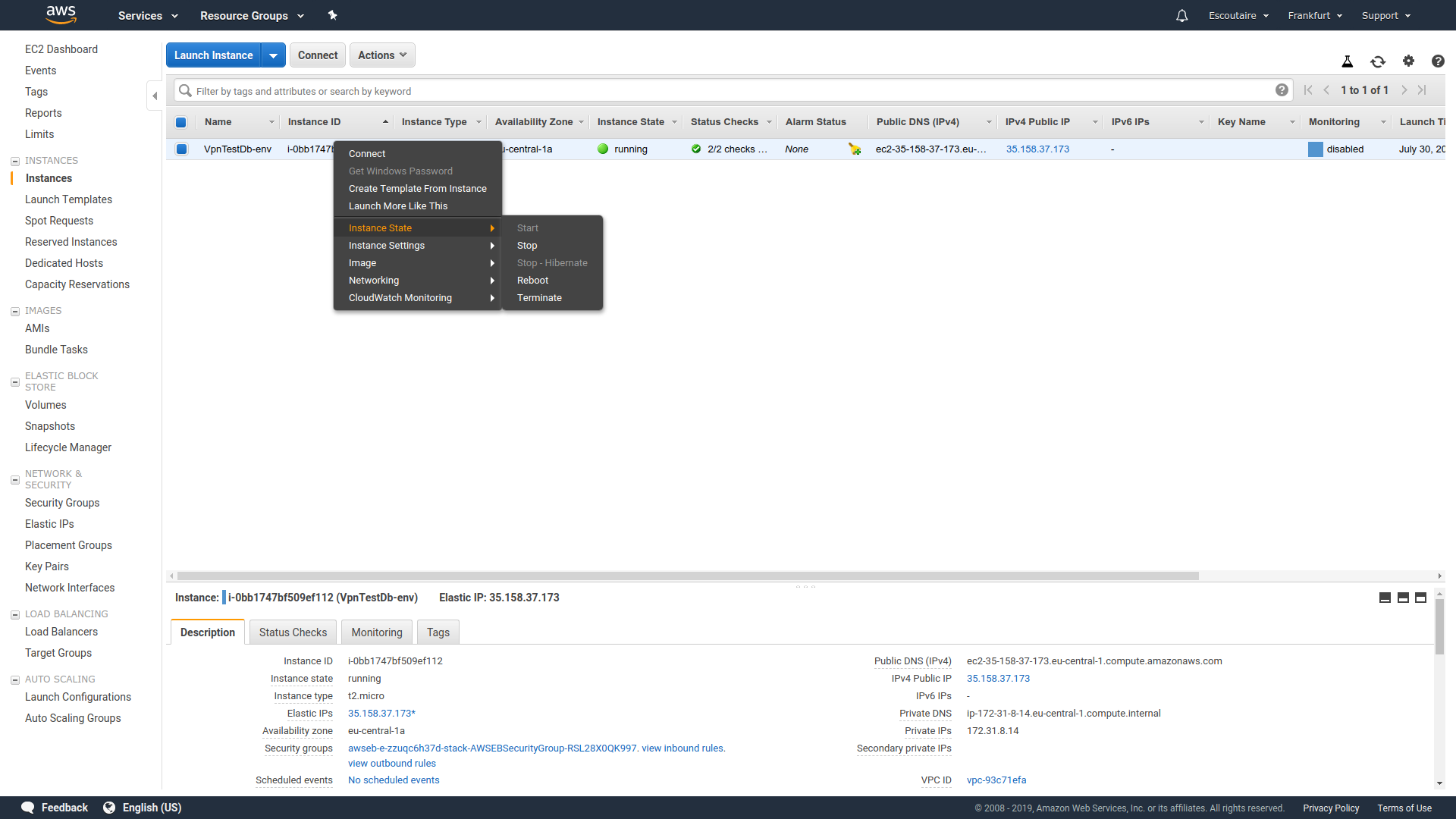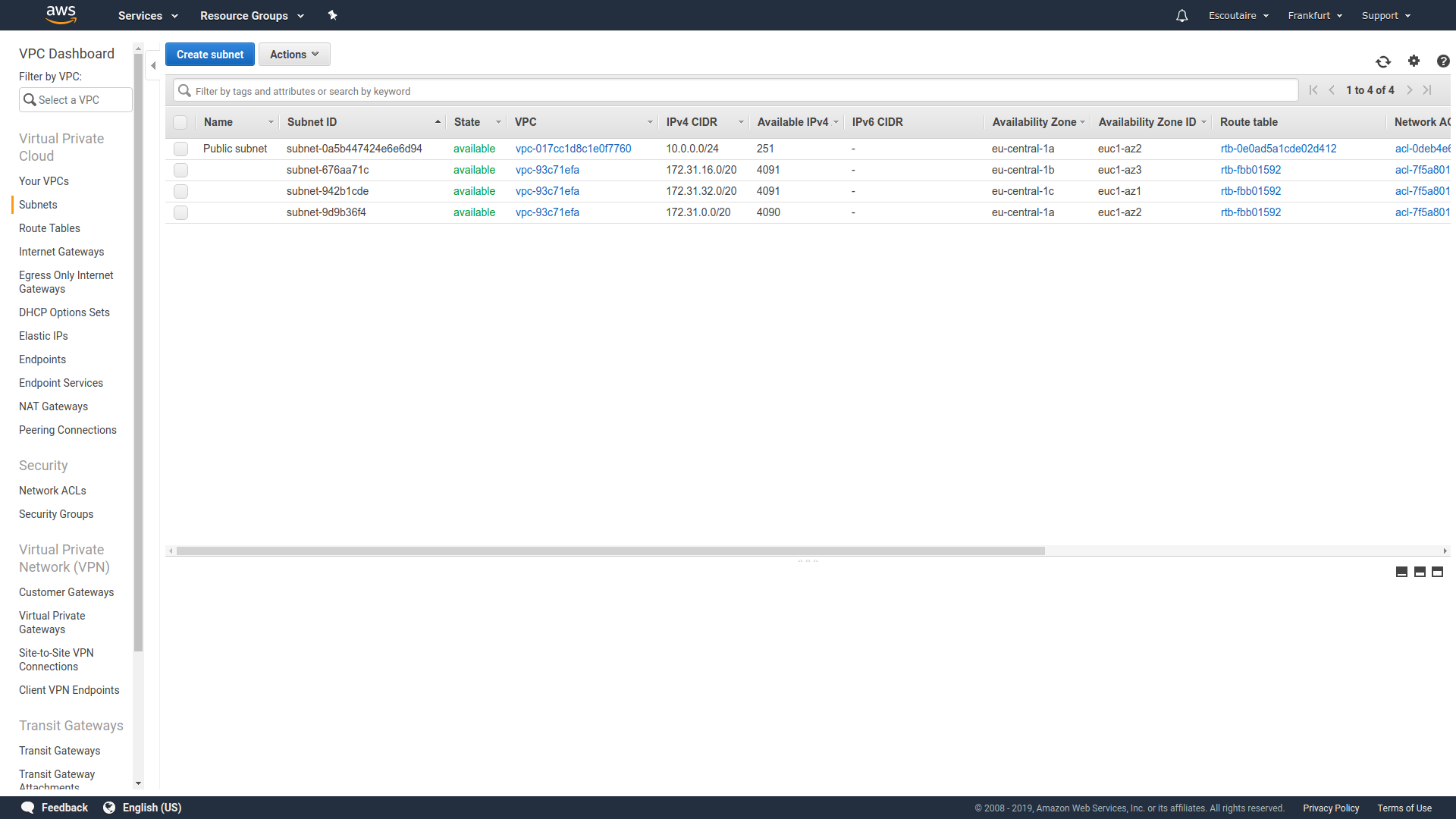Amazon Web Services review: AWS packs in more features than any other cloud service provider
The biggest and most well known cloud provider around – but it isn't always the most economical options for SMBs

-
+
Huge range of services
-
+
Generous free and trial options
-
+
Offers true cloud desktops
-
-
Complex pricing with some hidden costs
-
-
Less competitive than Azure for Microsoft products

When you think of cloud computing, more often than not Amazon Web Services (AWS) will come to mind. The software arm of parent company Amazon has dominated the cloud market for the best part of 20 years and offers probably most of the online services you've heard of.
In many ways, AWS is a prime example of the benefits of being first to market. It began by migrating the networks and servers of small businesses to the cloud, capitalizing on demand for virtualization, storage, and edge computing. Such was the speed it moved, most of its rivals are still playing catchup today.
Amazon Web Services: Deployment
AWS has a frankly dizzying array of features, from machine learning testbeds to augmented reality application development and Internet of Things connection kits, but we're interested in servers and networking to support a standard office.

For this, you'll want to deploy a Virtual Private Cloud and, on that, deploy any servers to handle whatever single sign-on, storage and database needs your business has. VPCs are easy to manage if you're already confident with network infrastructure, but to connect your office to your cloud-based network, you'll need a fast internet connection and a firewall router powerful enough to handle a high-throughput VPN connection.
When deploying VMs, you can't just upload an ISO of your choosing and install that - only a rather limited list of Windows and Linux versions are available to install. However, it is possible to upload a VMware, Citrix, Hyper-V or Azure virtual machine image via an Amazon S3 storage bucket or – easier still – via the AWS Server Migration Service and connector software installed on your existing platform.
Amazon Web Services: Pricing
No matter which data centre region you're based in, in the world of AWS, everything is in US dollars, right up until the point at which your final bill is calculated in your choice of currency, based on Amazon's internal exchange rate.
This can be rather annoying, particularly when the pound undergoes major fluctuations due to political events, as it makes your month-to-month costs less consistent than they otherwise would be.
Sign up today and you will receive a free copy of our Future Focus 2025 report - the leading guidance on AI, cybersecurity and other IT challenges as per 700+ senior executives
The default option for your AWS deployments is its On-Demand pay-as-you-go pricing. However, as with Microsoft Azure, you can save money if you deploy longer-term reserved instances for any virtual infrastructure that you plan on leaving in operation for an extended period.
Needless to say, the exact costs of any deployments will vary widely depending on your exact needs. To provide a basic example, we use the AWS Simple Monthly Calculator to cost up a single general-purpose virtual machine running Windows Server on a two-core, 8GB VM with a 'moderate' connection - estimated by various third party tests at around 300Mbit/sec - costs $152.26 per month, plus $36.60 for a 1024GB HDD.

The speed of that network connection makes a great difference to pricing: two cores and 8GB RAM on an up-to-10GB/sec connection cost $282.56 per month. A little less variably, an Active Directory connector starts at $43.92 and a Virtual PrivateCloud at $36.60 per month for a single connection from your office router.
Critically, the estimation tool - unlike Azure's - won't generate a baseline estimate of how much data in and out a business might use every month. You'll have to estimate that manually: at an estimated 100GB per month in and out (only outbound traffic costs anything in this scenario), we'd pay $17.91 per month.
That adds up to $294.71 (242.53) per month, including a small free tier discount. For Windows servers, Microsoft's Azure platform is much more competitive at the moment: 196.68 per month will get you a similar setup.
A lot of that is to do with the cost of licencing Windows, which Microsoft can subsidise for Azure users. Switch that AWS server VM to Linux, and it'll cost $84.92 per month, rather than $152.26.
Amazon WorkSpaces virtual desktop computers start at $7.25 per month plus $0.17 per hour of active use (or a flat $21 per month) for a Linux desktop system and $7.25 per month and $0.22 per hour (or a flat $25 per month) for a Windows desktop, with one core, 2GB RAM, an 80GB root volume and 10GB of user storage.
AWS can sometimes spring unexpected costs on you, for example by billing hourly for IP addresses that were once attached to a terminated VM. Similarly, leftover key pairs and storage drives associated with virtual machine instances incur charges if they're not manually deleted when an instance is.

Data throughput and the sometimes arcane relationships between services can also add to the cost of AWS deployments, and you might miss out on its free intra-region data transfer fees if you don't set everything up correctly.
In the case of a Virtual Private Cloud, you'll have to create a specific subnet endpoint pointing at the AWS service you're trying to connect to in order to benefit from free throughput: connecting to a public IP address provided by the service will result in data transfer being billed as though it was going to a location on the wider internet, rather than inside AWS.
Like Microsoft and Google, AWS provides a wide range of free services intended to allow administrators to extensively prototype and test cloud-based systems and services for their business, from short-term free trials to always-free services and free 12-month subscriptions for new AWS subscribers.
In the latter category, new users can run up to 750 hours a month of Linux and Windows EC2 Micro virtual machine instances, 5GB of S3 storage, various Amazon WorkSpaces cloud desktop and AppSteam always-available desktop application streaming bundles, 750 hours of database services and more.
In the Always Free category, you'll get ten CloudWatch resource monitoring deployments, 62,000 outbound email messages, 10GB of Glacier cold storage, key and licence management, 100GB of hybrid cloud storage, and Amazon's Chime unified communications platform among other bits and pieces.
Amazon Web Services: User interface
The AWS Management Console is a lot nicer to look at and carry out day-to-day management and deployment tasks with than Microsoft's rival Azure platform. There's more white space and fewer immediately visible options, which helps to make it feel less cluttered.

Your most recently visited services are front and centre, and you can open a full list of every single one of AWS' vast catalogue of services. At the top of the page is a search interface, where you can search for services by name or function, so if you search for 'virtual desktop', you'll be directed to WorkSpace and if you search for 'cold storage', S3 Glacier pops up.
Below, a range of wizards and tutorials are available to help you deploy and work with popular services such as virtual machines, virtual servers and hosted web apps. Each service has its own management interface which, again, is a little more comfortable to use than Azure's.
However, there's a distinct design language at work here that you'll have to get used to, particularly if you're primarily familiar with Microsoft's Server and cloud products. We were pleased to find that free-tier eligible options were clearly marked when we used the VM deployment wizard, which also provides helpful guidance when it comes to keeping your deployments secure, such as locking access to specific IP addresses.
Amazon Web Services: AWS vs Azure vs Google
AWS has been the dominant force in cloud computing, largely because it was the first real giant of the space. Next year the cloud-arm of Amazon will celebrate its 20th birthday, but it will do so with more competition than ever before. Three companies now sit at the top of the cloud market – comfortably – with the Google Cloud Platform and Microsoft's Azure fighting for market share with AWS.
Differentiation is one of the main reasons for this threesome. Both the Google and Microsoft platforms are less complex than AWS; This is in terms of tiered options for features and cost. AWS does, however, offer a well-designed interface that is effective at breaking down the different user options.
Another area AWS does well is its 'quote generator' and cost management tools which allow customers to keep on top of what they're using and avoid running up unexpected fees and costs. It is important to note that data throughput costs are not bundled in here, so they will have to remember to include that in estimates.
Part of the issue here is that AWS has such a breadth of features – one can easily get lost and confused in its ecosystem. But that is also its main reason for being the number one company. That wide range of services – far more than its competitors – is reliable, flexible, and immensely cost-effective. The downside is that you might need a dedicated expert to manage your AWS services – either staffed or freelance – if you don't have the required skill sets in your organization.
Microsoft's Azure isn't much easier to use, in fairness. Users find its management interface that little bit more familiar however as it's very much in the style of Windows. The pricing for Windows-based services is also more affordable than AWS, which essentially makes it slightly office infrastructure migrations.
Is it worth it?
For a long while the answer to this question was a resounding yes, but Microsoft and Google have built out their cloud products quite significantly over the last few years, finding areas that AWS doesn't cover. Now, with the mass adoption of AI, AWS is not the defacto best anymore.
Complexity is also still an issue for AWS. It has indeed a wide array of products and services, far more than the competition, but that can be confusing and ultimately off-putting. However, AWS is, and has largely been, the market-leading company in the cloud space, and for good reason – it simply offers the most.
Amazon Web Services review: Requirements
- Fast, ideally symmetric, internet connection
- Powerful firewall router with VPN support
K.G. is a journalist, technical writer, developer and software preservationist. Alongside the accumulated experience of over 20 years spent working with Linux and other free/libre/open source software, their areas of special interest include IT security, anti-malware and antivirus, VPNs, identity and password management, SaaS infrastructure and its alternatives.
You can get in touch with K.G. via email at reviews@kgorphanides.com.
-
 Microsoft Excel is still alive and kicking at 40 – and it's surging in popularity as 82% of finance professionals report ‘emotional attachment’ to the spreadsheet software
Microsoft Excel is still alive and kicking at 40 – and it's surging in popularity as 82% of finance professionals report ‘emotional attachment’ to the spreadsheet softwareNews A recent survey found Gen Z and Millennial finance professionals have a strong “emotional attachment” to Microsoft Excel
By Emma Woollacott Published
-
 LastPass hit with ICO fine after 2022 data breach exposed 1.6 million users – here’s how the incident unfolded
LastPass hit with ICO fine after 2022 data breach exposed 1.6 million users – here’s how the incident unfoldedNews The impact of the LastPass breach was felt by customers as late as December 2024
By Emma Woollacott Published
-
 OpenAI turns to red teamers to prevent malicious ChatGPT use as company warns future models could pose 'high' security risk
OpenAI turns to red teamers to prevent malicious ChatGPT use as company warns future models could pose 'high' security riskNews The ChatGPT maker wants to keep defenders ahead of attackers when it comes to AI security tools
By Nicole Kobie Published
